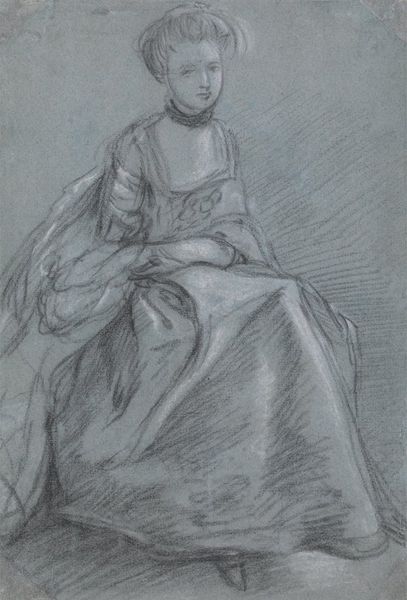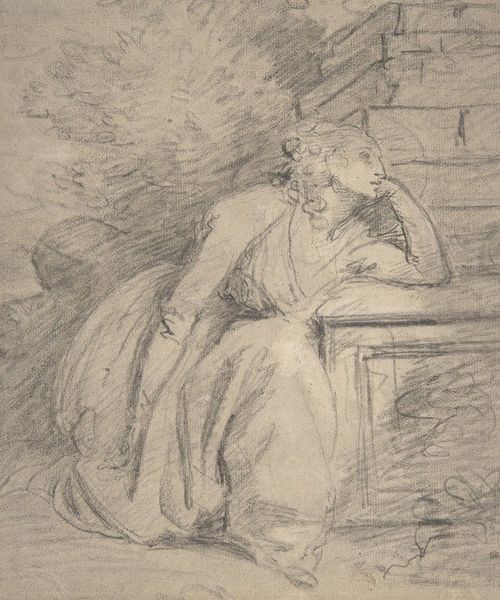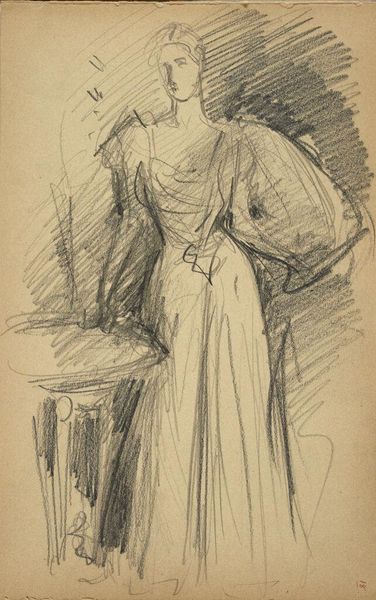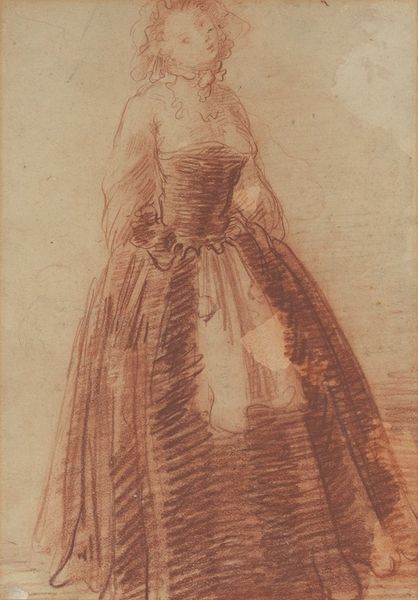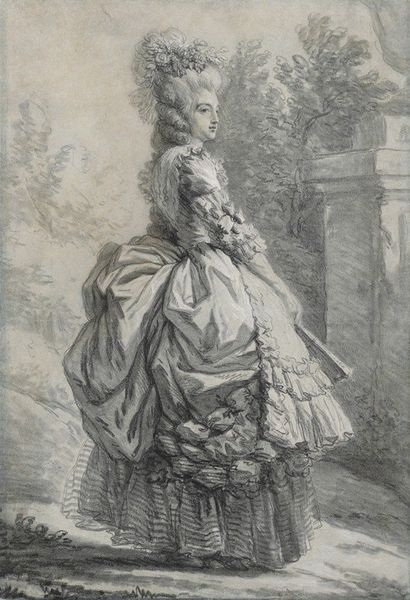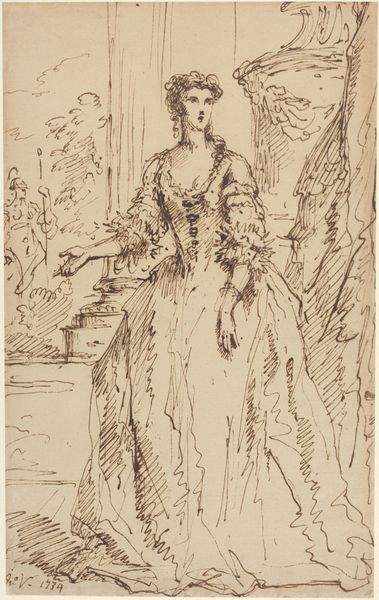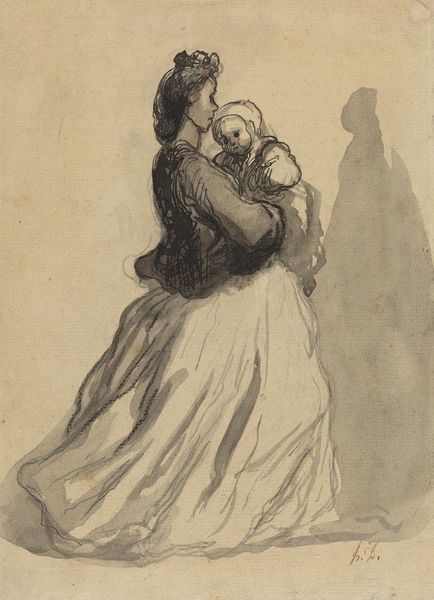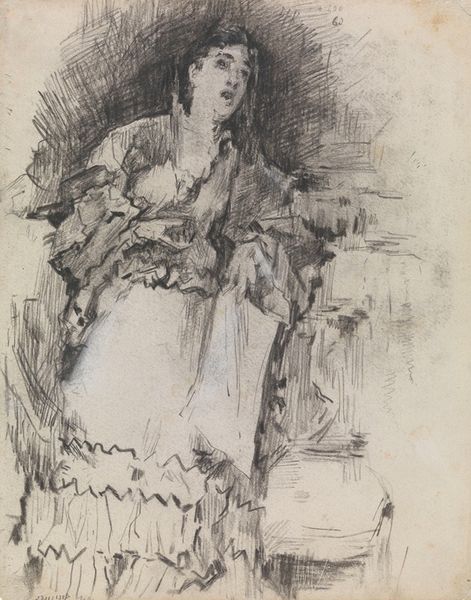
Copyright: Public Domain: Artvee
Editor: Thomas Gainsborough's "Study of a Lady," created around 1785, is a beautiful drawing rendered in charcoal on paper. There's something incredibly delicate and ethereal about it, almost like she's a figure in a dream. How do you interpret this work? Curator: Indeed. I'm immediately struck by the contrast between the soft, almost dissolving lines of the woman and the sharper, darker lines of the surrounding landscape. It evokes the "Romantic" ideal of a person amidst nature. But consider, what does a grand hat mean when she is positioned by barren branches, where are we if not fully present and grounded in materiality? Editor: That’s a great point. The hat is almost a symbol of societal status, right? A disconnect perhaps. Curator: Precisely. It speaks to a visual trope popular at the time: where a woman might find herself when positioned outside societal restrictions. Notice how her posture, slightly off-kilter, emphasizes her unease and that speaks volumes about women's positions in this era. Does the symbolism of a figure in charcoal itself have any bearing? Editor: Charcoal seems less formal somehow... maybe conveying a more transient sense of being? A woman can never stand for herself because everything in life has been handed to them in life, and nothing else. Curator: A keen observation! Charcoal drawings have the air of an impermanent sketch rather than an eternal icon. We gain an emotional intimacy by it not existing as something grand. This piece beautifully encapsulates the social and psychological experience of women from Gainsborough's Romantic point of view. What a thing to realize the human side of things in romanticism that still shows reality Editor: It’s fascinating to see how Gainsborough used charcoal not just as a medium, but as a means of subtly conveying those complex ideas about womanhood and societal expectations. Thanks for the insight!
Comments
No comments
Be the first to comment and join the conversation on the ultimate creative platform.


